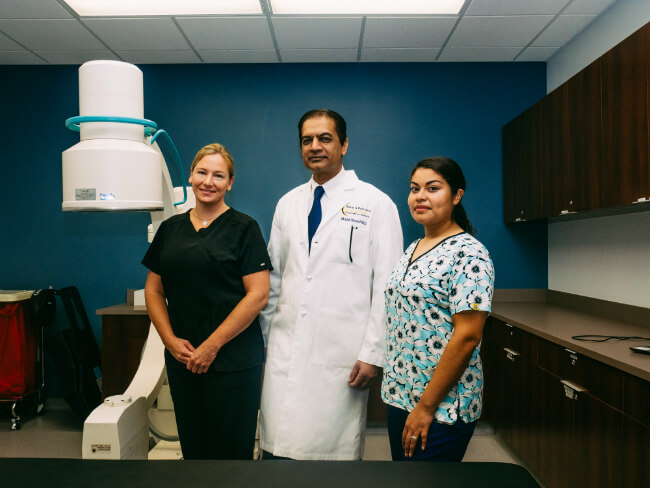Diagnostic Consultations
![]()
Call (703) 520-1031 or use the form to send us your contacts.
It is important to understand that the phenomenon of pain is a complex medical issue. Diagnostics and treatment of chronic pain syndromes often require a multidisciplinary approach provided by different specialists. Therefore, a diagnostic consultation with physicians working in pain management is usually the first step of your treatment. During the diagnostic consultations, a pain management specialist will review your medical history, symptoms, medications, X-ray scans, MRIs, and other tests to diagnose the source of your pain.

Who are pain management consultants?
Pain management consultant is a physician who is specialized in a treatment of acute and chronic pain-related conditions. Pain management consultants provide complete pain care and perform some interventional techniques which are aimed at pain relief. In addition, treatment program involves the multidisciplinary team, utilizing the services of psychologists, physical and occupational therapists.
Spine pain diagnostics
The causes of back pain can involve several factors. Diagnostic process can refer your problem to various medical fields such as neurology, orthopedics, neurosurgery, and even psychology. Therefore, getting an accurate diagnosis of the cause of back pain is crucial because different spine conditions require different treatment approaches. The sooner an accurate diagnosis is made, the sooner the patient can find an appropriate treatment for pain relief. Examination and diagnosis of back pain usually include the following steps:
Review of your medical history.
The physician will ask you questions regarding your symptoms and their characteristics, for example, when the low back pain or other symptoms occur, how the pain feels, what movements, positions, or treatments make the pain feel better.
Physical Examination.
The physicians will perform a thorough physical exam, including testing nerve function and muscle strength in specific parts of the leg or arm, assessing reflexes and their characteristics, and evaluating pain in certain positions.
Diagnostic Testing.
After the physician has some version of pain source, a diagnostic imaging, such as a CT scan or an MRI scan. It may be necessary for confirmation of the suspected cause of pain, as well as for planning the surgical intervention if it is needed.